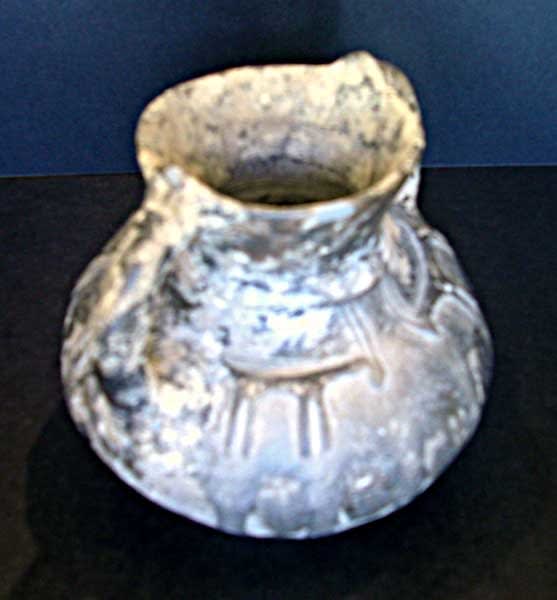Bronze Age Vessel with a Stag Motif, 1750 BCE - 1250 BCE
Terracotta
5.5
PF.6115
In most traditional Indo-European pantheons, the stag is not a particularly significant animal. However, in Classical times, the stag was of paramount importance to the Scythians and other nomadic peoples...
In most traditional Indo-European pantheons, the stag is not a particularly significant animal. However, in Classical times, the stag was of paramount importance to the Scythians and other nomadic peoples of the Eurasian steppes. The standard subject of Scythian gold jewelry, the stag has even been found tattooed on the "ice princess," discovered in the Altai Mountains. Here, her frozen body was recovered with Scythian style stags still plainly visible on her skin. We can only guess how ubiquitous this iconography must have been, ornamenting clothes and other perishable material. Over a thousand years before, the stag was a favored motif of the Kurgan peoples. As a wild and majestic animal, we should not doubt that the genesis of this deity's veneration is very ancient, likely beginning long before the Neolithic period. This remarkable vessel, originating in the ancient Anatolian/Persian steppes, reveals the sacred status of this majestic creature. Four stags appear, interspersed between the two loop handles that arch from the lip of the mouth to the shoulders of the body of the vessel. The body has been vertically ribbed, emanating from the legs and horns of the stags as if they stood on stilts. Revered as a deity, the stag embodied the natural forces of the world that are beyond the control of man. Thus, as an ornament, the stag symbolizes mankind’s desire to understand the natural order of the world. Appearing as if copied from a cave wall, the stags that decorate this vessel sound the echoes of the birth of civilization. No doubt revered for many millennia in the Eurasian steppes, the stag is more than an animal; it is man’s inherent quest to comprehend life, a quest that first brought us out of the caves and carried us towards civilization.



